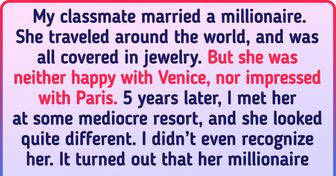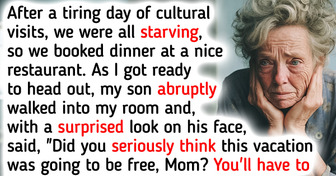Influencer Reveals Dramatic Results of Her Fox Eye Plastic Surgery

We know that all livestock was once domesticated from wild species. But what about plants? Bright Side decided to have a look at how our favorite food looked thousands of years ago before humans started to cultivate them. So here are pictures of ancient cultures and their modern descendants. Tell us which ones you would like to try!
The wild ancestor of modern watermelon is a desert viny plant with fruit. It has a spongy white and extremely bitter pulp. The desert Bedouin are said to make a type of bread from the ground seeds, and the oil obtained from the seeds can be used for medicinal and soap production.
The banana is an early example of a domesticated plant. Wild bananas have a lot of pretty hard seeds that are up to 0.24 inches in diameter. For millions of people in developing countries, the green (unripe) bananas used for cooking represent the main cultivars. They can be fried, boiled, baked, or chipped like potatoes or used for making banana wine or banana beer. Ever tried boiled bananas?
The original eggplant is actually a weed that grows along roads and on disturbed and overgrazed areas, and it is toxic to livestock. Modern eggplants are typically purple in color, but there are white oval-shaped cultivars that really look like an egg. Eggplants are also called aubergines. Tell us what you call it in your country!
The wild carrot was originally cultivated for its leaves and seeds, and nowadays it is considered to be a beneficial weed. It attracts wasps and butterflies and boosts tomato plant production when kept nearby. Orange carrots, as we are used to seeing now, appeared in the Netherlands only in the 17th century.
Before domestication, maize (or corn) plants only grew small 1-inch-long corn cobs, and there was only one per plant. Although now we generally only see classic yellow cobs on the market shelves, there are a lot of beautiful multicolored varieties that look more like glass gems than corn kernels.
"You like to-may-toes, and I like to-mah-toes," sang Fred Astaire 80 years ago. Tomatoes have changed in size, color, and taste since they were domesticated by humans, but several wild species are still being consumed by the aboriginal population as they are a good source of potassium and vitamin C.
The wild strawberry is a tiny but delicious berry with a very delicate scent, which was lost during years of cultivation. Just look at this cute elephant-shaped strawberry! It’s huge, but it’s not as aromatic as its ancient relative.
Have a look at these native potatoes from South America. They grow in a large diversity of shapes, colors, and textures, and we stick to one type of plain one. There are several organizations in South America that not only maintain the diversity of the species but also promote the popularity of them around the world. So one day we’ll probably see those in our supermarkets.
Selective breeding over hundreds of years changed the food we eat now. Using genetic engineering raises a lot of questions, but it makes a huge impact. Who knows what kind of fruits and vegetables we will grow in 20 years. How will food look in the future, and will we like the changes? Share your thoughts in the comments.











